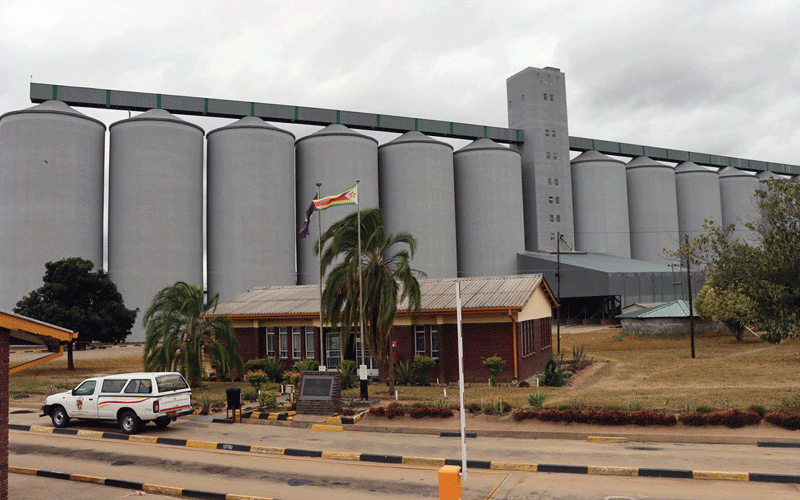
IN December 2022, the Zimbabwean government announced pre-planting producer prices for strategic commodities for the 2022/23 agricultural season.
Maize was pegged at US$335 per metric tonne (MT), soyabean at US$597,59/MT while sunflower was set at US$687,23/MT. For traditional grains, the price was set at US$335/MT while cotton was pegged at US$0,40/kg for grade D; US$0,41 for grade C; US$0,43 for grade B and US$0,46 for grade A.
On agricultural subsidies, the government set aside ZW$77 billion (US$113 million then) in the 2023 National Budget to provide free seed and fertilisers to smallholder farmers under the Pfumvudza/Intwasa scheme.
The programme was set to benefit at least three million farmers this year. Despite the seemingly high pre-planning producer prices, production for all the strategic commodities remains critically low to meet national demand.
Over the last 10 years, imports for maize, wheat and soya cost the nation an average of US$500 million per annum. The government remains firmly in control of the agric sector from financing, price setting, procurement of produce, marketing, and regulation.
Zimbabwe has an annual requirement of 2,2 million metric tons of maize with 1,8 million going to human consumption and over 400 000 MT going to livestock. National demand for wheat stands at 450 000 MT, while that for soya is at 250 000MT.
Why commodities markets
The purpose of exchanges is to provide a centralised marketplace where commodity producers can freely sell their commodities to industrial buyers or merchants.
- Govt opens ChiTown e-passport centre
- Border Timbers targets European markets
- NGO brings cheer to diarrhoea-hit Byo suburbs
- Garakara walks through his music journey
Keep Reading
Commodity markets provide the key role of access to market and price discovery which critically lacks for most rural farmers. Thus, producers (especially farmers) can utilise the commodities futures contracts to lock in a price that they think is apt for their products thereby ensuring that they are protected against falling prices in future.
Oversupply of a commodity in the market weakens prices, which can be dealt with by selling futures on the commodity at a price that profits the farmers and allows for reinvestment into the same crop (growth in production).
One of the biggest problems farmers face is that they are small scale, dispersed and far from big urban markets where key buyers are situated.
Thus, the commodity exchange plays a key role in being an aggregator. A well-organised commodity market can prove to be an effective aggregator as it provides a guaranteed aggregation system that facilitates dispersed farmers.
Financing is another significant aspect of commodity markets. These markets enable raising finances from private financiers such as banks against warehouse receipts and rid the agriculture sector of relying on unorganised financing from unscrupulous middlemen who fleece farmers.
The government’s role is to establish, determine and enforce rules and procedures for standardised commodity contracts.
Challenges faced by farmers
Among the many challenges besetting the agriculture sector locally is the absence of a well-designed and financed post-harvest system. This leads to a substantial loss of perishable products such as vegetables and food grains thereby affecting commodity prices and putting the farmers at a loss.
Farmers are left with no choice than to undercut themselves and sell their produce at giveaway prices when there is oversupply or limited access to market.
Lack of affordable finance from the banking sector is also a pain for local farmers who do not have bankable title to their land. This means that farmers cannot ignore government handouts, free inputs, or middlemen in some cases.
Powerful middlemen have better bargaining power in pricing as they have access to industrial buyers and control of organised markets such as Mbare Musika. An efficient and well-regulated commodity market serves as a rescue for farmers, brokers, consumers, and investors alike.
An efficient commodities exchange mechanism also encourages bigger investments in agriculture in improved transport facilities and warehousing systems. This will, in turn, result in a better-developed and productive agricultural ecosystem.
Successful models
Typical examples of efficient commodities markets locally are the tobacco auction floors, which are regulated by the Tobacco Industry and Marketing Board (TIMB).
The Chicago Mercantile Exchange (CME) in the United States and the Tokyo Commodity Exchange (TOCOM) in Japan are notable international examples of liberal markets dealing in agricultural and non-agricultural commodities.
Closer home, the Ethiopia Commodity Exchange (ECX), Ghana Commodity Exchange (GCX) and the South African Futures Exchange are some of the successful examples of commodity exchange markets that are driving trade in various commodities in the region.
In South Africa, the agricultural derivatives from the Johannesburg Stock Exchange (JSE) provides a platform for price discovery and efficient price risk management for the grains market in the whole of Southern Africa.
History of commodities exchange
The country relaunched its mercantile exchange (ZimX) market in August 2021, although producers and financiers are yet to fully embrace the market. Additionally, maize (the staple crop) is still heavily controlled by the government to be traded openly on the market thereby weakening ZimX.
Zimbabwe previously had a thriving Commodity Exchange of Zimbabwe (COMEZ), which was closed when the government gave the monopoly to buy and sell maize and wheat to the GMB in 2001.
Currently various players are involved in contract farming arrangements, production and marketing of other agricultural commodities, such as soya, cotton, coffee and tea, sugar and horticultural products.
The key challenge with the marketing of agricultural commodities in Zimbabwe is the aspect of price discovery as farmers often sell their produce at low prices that are determined by their desperation for cash or foreign currency and not the market price for their produce.
The high levels of inflation have also affected viability in farming. Some farmers have also fallen prey to contracting firms that set very low prices on contracting or repay them in groceries under one-sided terms. Over the years, government interventions in setting producer prices in a depreciating currency have nurtured side-marketing of agricultural commodities. Thus, agriculture production and investment has slumped across the country.
Managing excessive informalisation
Zimbabwe is facing a real threat of informalisation of key economic sectors, such as agriculture, which contribute a mere 8% to the country’s GDP.
Entirely all farmers trade their commodities informally, which means that they are excluded from various financial packages that can benefit them from the private sector.
Informality is also a factor of vulnerability, with millions of employees in the agriculture sector lacking job and social security, income consistency, health insurance, savings and living from hand to mouth. All these conditions are closely associated with poverty. Hence most farmers remain poor despite the hard work and toiling.
This trend is likely to continue if there are no open market incentives for farmers to produce and the private sector to fund agriculture within a commodities market ecosystem.
Government controls, low foreign currency retention thresholds, distorted financing models and other production bottlenecks are negatively impacting open market systems to produce. They are also providing breeding grounds for corruption by regulators, subdued productivity and distorted pricing models in a country so endowed with vast agricultural potential.
Commodities exchange markets are pivotal in addressing most of the value chain bottlenecks being experienced in agriculture at the moment. Forward contracts in commodity exchange markets are pivotal in channeling foreign currency to the formal market for the benefit of other producers that may require it instead of them sourcing it on the parallel market.
This can be a sustainable solution to solving the foreign currency dilemma that has resulted in various producers closing shop or pricing their products beyond the reach of local consumers (including farmers).
Commodity exchange markets also bring a great deal of transparency for tax collection purposes and minimise foreign currency externalisation by local producers.
More importantly it creates employment for various players in the value chain, thereby helping the agricultural and mining sector to stay formal.
- Bhoroma is an economic analyst and holds an MBA from the University of Zimbabwe. — vbhoroma@gmail.com or Twitter: @VictorBhoroma1.






